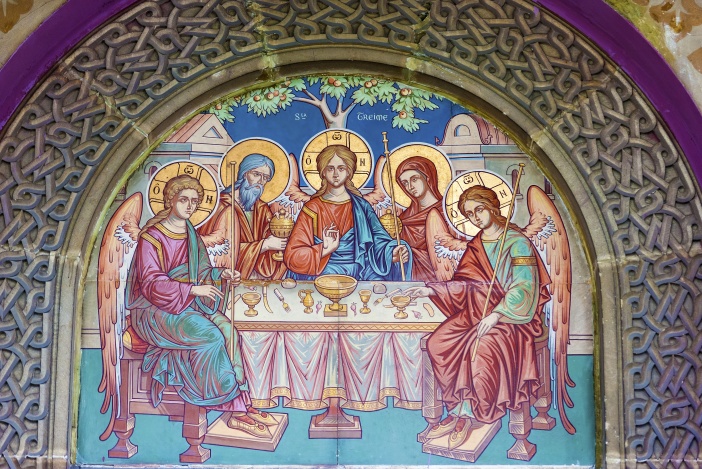
The water at Cana, which Jesus turned into wine, was not ordinary water.[1] It was water used for Jewish purification rites to cleanse people who had had contact with death. According to Numbers 19, a red heifer without blemish was to be offered completely to the Lord as a sacrifice. The ashes from the red heifer were to be added to water for purification. Any person who had had contact with a dead person or animal was to be sprinkled with this water on the third day and the seventh day to be cleansed from the contamination of death. So, the water Jesus transformed into wine had bits of ash.
The water at Cana contained the transformed remains of body of the animal that was sacrificed. This sets up a tremendous number of parallels between the Cana wine and the wine of the Last Supper! Let’s take a look at some.
First both wines were miraculous in origin. The changing of water into wine was Jesus’ first miracle. Jesus transforming bread and wine into His Body and Blood was His last miracle before His death on the cross.
Both wines were sacrificial and contained the body of the sacrificed one. The Red Heifer was sacrificed and the substance of his body was transformed by the fire into ash. One of the symbols of the Holy Spirit is fire. Those ashes were placed by a priest into the purification water and made available to the people. The substance of Jesus’ Body, which was about to be sacrificed, was transformed by the Holy Spirit to be present in the bread and wine that Jesus offered. That is why Jesus could say, “This is my body which is given for you (Luke 22:19),” and “This chalice which is poured out for you is the new covenant in my blood (Luke 22:20).” Priests through the working of the Holy Spirit make the Body and Blood of Jesus available to the people through the Eucharist.
Both wines were transubstantiated. Oh, big word. It means the substance of the original product was changed into the substance of something else. So at Cana, the substance of the water was changed into the substance of wine. At the Last Supper and at every Mass, the substance of bread and wine is transformed into the substance of Jesus’ resurrected Body and Blood. It maintains the appearance of Bread and Wine for our benefit.
The water at Cana was meant to cleanse people from the effects of death, but it was not effective. Like all of the sacrifices offered in the Old Testament, their purpose was to point to the sacrifice that actually would be able to cleanse us from sin and save us from its effects, that being eternal death. The sacrifice of Jesus and His Body and Blood to actually save us from the effects of sin and bring us into everlasting life. As Jesus says, “Truly, truly, I say to you, unless you eat the flesh of the Son of man and drink his blood, you have no life in you; he who eats my flesh and drinks my blood has eternal life, and I will raise him up at the last day. For my flesh is food indeed, and my blood is drink indeed.” (John 6:53-55)
The first miracle took place at a wedding feast. The steward went to the bridegroom to comment upon the miraculous wine saying, “Every man serves the good wine first; and when men have drunken freely, then the poor wine; but you have kept the good wine until now (John 2:10). The wine was the bridegroom’s responsibility. Throughout the Bible God is portrayed as a Bridegroom wooing his people. In Revelations, heaven is portrayed as giant wedding feast, where God is finally united to His people portrayed as the Bride. Jesus the Bridegroom provided wine out of the very sacrifice of his life.
“The Spirit and the Bride say, ‘Come.’ And let him who hears say, ‘Come.’ And let him who is thirsty come, let him who desires take the water of life without price. (Revelations 22:17).”
***This represents my return to blogging after a several year hiatus while I have been working on my Master degree in Theology. I’m still working on it but I was convinced by a friend to return to writing. Kathy Labosh***
[1] “The New Testament” Ignatius Catholic Study Bible, footnote on verse 2:6.
#Cana #rcot #waterintowine #LastSupper #miracle
Kathy, I’m so blessed by this post and grateful you are blogging again. Keep it up, please’!
LikeLike
Kathy, I’m so blessed by this post and grateful you are blogging again. Keep it up, please’!
LikeLike
Thank you for sharing your insights once again. Easy to understand and a quick read.
LikeLike